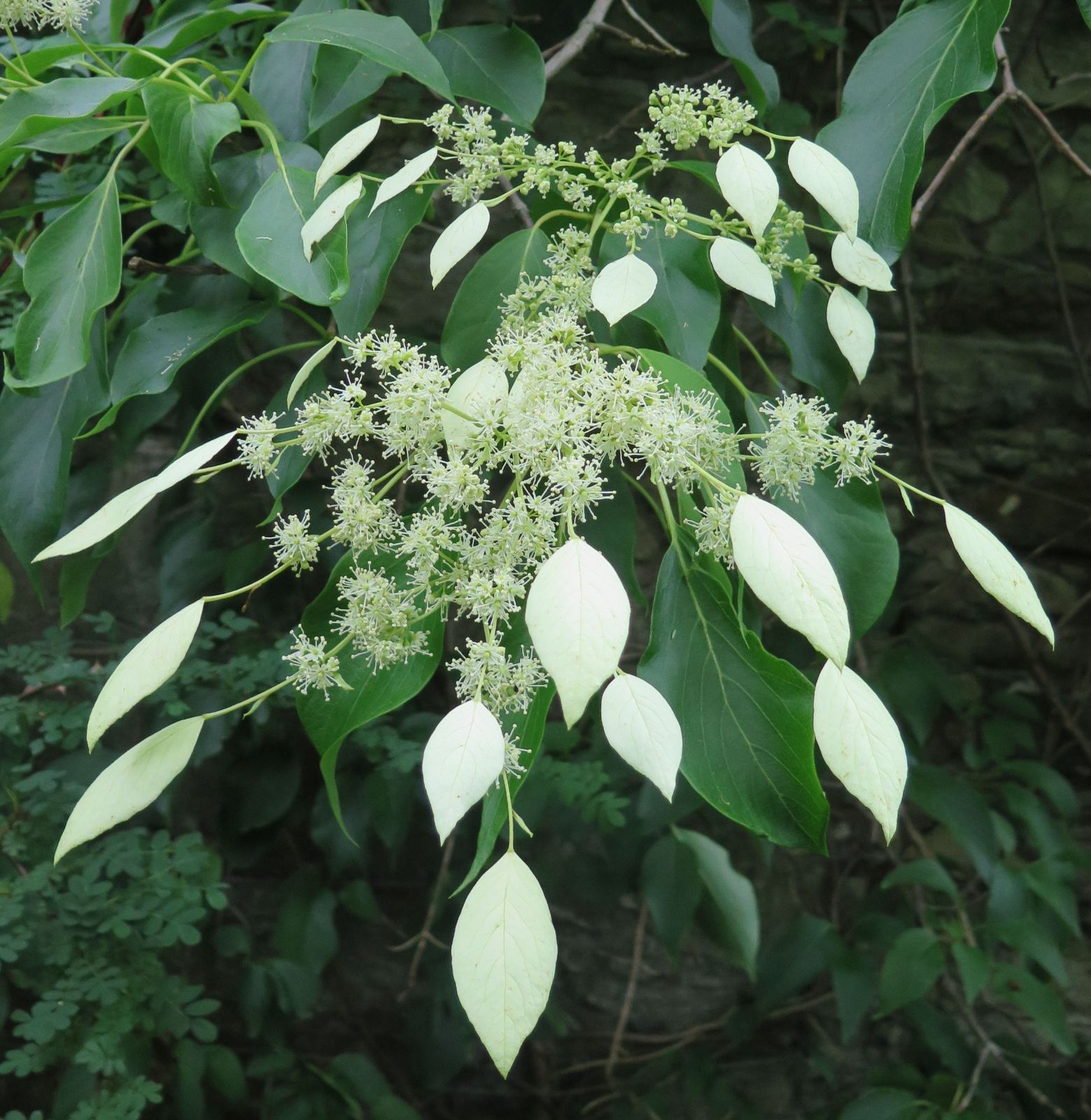Schizophragma integrifolium
Credits
Article from Bean's Trees and Shrubs Hardy in the British Isles
Recommended citation
'Schizophragma integrifolium' from the website Trees and Shrubs Online (treesandshrubsonline.
Genus
Synonyms
- S. hydrangeoides var. integrifolium Franch.
A deciduous, climbing shrub of robust growth, reaching probably 40 or more ft in height. It produces aerial roots from the branches by which it attaches itself like ivy to the object upon which it grows; young stems hairy or glabrous. Leaves ovate, with a heart-shaped or rounded base, tapering to a long fine point at the apex, 3 to 7 in. long, 11⁄2 to 41⁄2 in. wide, the margin entire or sparsely set with small thin teeth, hairy beneath on the midrib and veins; stalk 1 to 21⁄2 in. long, more or less hairy when young. Flowers produced in a flat cyme up to 1 ft in diameter; the fertile flowers in the centre each 1⁄4 in. across, and comparatively inconspicuous. But terminating each division of the inflorescence is the remarkable single sterile blossom, consisting only of one large white bract, narrowly ovate, up to 31⁄2 in. long, 13⁄4 in. wide, and veined like a leaf with darker lines. Bot. Mag., t. 8991.
Native of Central China, where it inhabits rocky cliffs; introduced by Wilson for Messrs Veitch in 1901. It grows well and is now well established in cultivation and is proving to be a free-flowering climber remarkable for the enormous white bracts accompanying the inflorescence. The stems of our young plants are very downy, and the down persists till the following year, but on Wilson’s wild flowering specimens they are quite glabrous. Var. molle Rehd., has the undersurface of the leaves and their stalks very downy.
S. integrifolium received a First Class Certificate in 1963 when exhibited by Sir Henry Price from Wakehurst Place, where there is a fine plant (Journ. R.H.S., Vol. 88 (1963), fig. 169).

